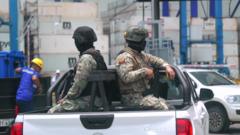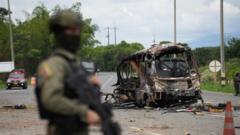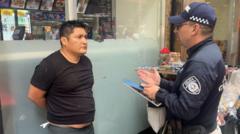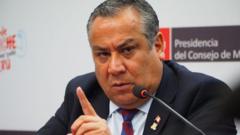The expansion of the Albanian mafia's drug trafficking network through Ecuador has made it a focal point in the global cocaine supply chain, exacerbating violence and economic distress in the region. As European demand for cocaine rises, Ecuadorian authorities struggle to combat the burgeoning trade, which poses dire consequences for both local communities and international users.
The Rising Tide of Cocaine Trafficking from Ecuador to Europe

The Rising Tide of Cocaine Trafficking from Ecuador to Europe
As cocaine consumption in Europe surges, Ecuador becomes a major conduit for trafficking, driven by criminal networks and facilitated by corrupt practices.
The Albanian mafia would call him and say: "We want to send 500 kg of drugs." César, a pseudonym for a member of the Latin Kings in Ecuador, reflects somberly on the dire choices presented to him in the realm of drug trafficking. This criminal network, among Europe’s most significant cocaine distributors, has increasingly targeted Ecuador, leveraging the nation's strategic location and corruptible interests in the counternarcotics police force.
Despite Ecuador not being a coca-producing country, President Daniel Noboa asserts that approximately 70% of global cocaine passes through its ports, primarily smuggled from Colombia and Peru, the world's leading cocaine producers. Authorities have reported record-high drug seizures in the past year, linking the alarming rise in cocaine exports to volatile violence; January 2025 alone saw 781 murders attributed to the drug trade, making it the deadliest month in recent memory.
César began his involvement with cartels at just 14 years old, influenced by a lack of legitimate employment opportunities. He explains how his role was crucial to facilitate the smuggling of cocaine through Ecuador’s ports, where the Albanian mafia operates with increasing audacity. “I knew the port guards and transport drivers,” he shares, detailing his complicity in bribing officials to overlook illicit activities. In exchange for his silence, he earns thousands of dollars per job, but with a chilling caveat: refusal could lead to fatal consequences.
The intricate methods employed by these gangs to elude law enforcement include hiding cocaine within legitimate cargo and directly tampering with shipping containers. Ordinary citizens like Juan, who drive trucks carrying legal goods, unwittingly get caught in this deadly web; should they refuse to partake in the transport of cocaine, they too face lethal repercussions. This chaotic environment has led to increased vigilance and armed presence at Ecuador's ports.
The booming Colombian banana export sector, which constitutes over two-thirds of containers shipped from Ecuador, has inadvertently provided cover for drug traffickers. Some gangs have even established bogus businesses as fronts to launder money and move cocaine. In recent years, reports suggest that Albanian elements have infiltrated these legitimate enterprises, leading to increased scrutiny from authorities.
Still, the growing cocaine production and smuggling operations have proven difficult to control. Ecuador's National Police report a staggering increase in drug seizures, with nearly 300 tons confiscated last year alone, in an effort to curb outflow to European markets. Major Christian Cozar Cueva highlights the challenges this surge presents to law enforcement.
The socio-economic fallout in Ecuador is palpable. The economic stagnation induced by the pandemic has left many vulnerable to gang recruitment. As the country grapples with the impact of organized crime, officials lament the failure to connect the dots between rising legitimate exports and deep-rooted criminal corruption.
European consumers, particularly in the UK and elsewhere, are a significant driver of this illicit trade. UN data underscores a troubling rise in cocaine consumption worldwide, with the UK reported to possess the highest rates in Europe. The UK National Crime Agency estimates that around 117 tons of cocaine are consumed annually in the country, making it a lucrative market for traffickers.
Officials battling these gangs emphasize the need for a unified response from consumer nations. “The solutions must involve countries whose citizens are driving the demand,” says prosecutor José. The effects of cocaine consumption echo through societal structures; an increase in related deaths and violence serves as a sobering reminder of the human cost associated with drug use.
In an appeal directed towards European nations, President Noboa has made tackling gang violence a cornerstone of his administration, calling for international intervention and collaborative efforts against organized crime. He poignantly connects the consumer habits in wealthier nations to the violence fostered along the supply chain, inviting reflection on the complex global dynamics of drug trafficking.
As Ecuador continues to navigate the treacherous waters of drug trafficking, the intertwined fates of European consumers and Ecuadorian citizens remain starkly evident. The message resonates clearly: tackling demand is essential to curbing the relentless cycle of violence and tragedy entrenched in the narcotics trade.



















